Children crowding around a charity kitchen holding empty pots and pans clamoring for food to take to their families. Hours spent in search of clean water and scouring piles of garbage looking for trash to burn for a fire to cook or keep warm.
These scenes, which NBC News’ crew in the Gaza Stripcaptured over the past week, come as humanitarian agencies sound the alarm over a dire and worsening situation in in the Palestinian enclave as Israel enforces a blockade on food, water, fuel, medical supplies and other aid and goods.
Israeli officials maintain there is “no shortage” of aid in Gaza and accuse Hamas of withholding supplies. Israel says its blockade is crucial to its goal of weakening the militant group’s control over the population.
The United Nations Office for the Coordination of Humanitarian Affairs (OCHA) and the World Food Programme (WFP) told NBC News they had seen “no evidence” of a diversion of aid in Gaza. Both warned that supplies in the enclave were running out.
‘Scraping the barrel’
Humanitarian groups describe a spiraling crisis on the ground, with bakeries shuttered for weeks because of a lack of wheat, food parcels for families running out, supplies of hot meals dwindling and medical supplies drying up.
“In terms of humanitarian supplies … I mean, to say dwindling would be putting it nicely,” Liz Allcock, head of humanitarian protection of Medical Aid for Palestinians, a United Kingdom-based humanitarian organization, told NBC News on Tuesday.
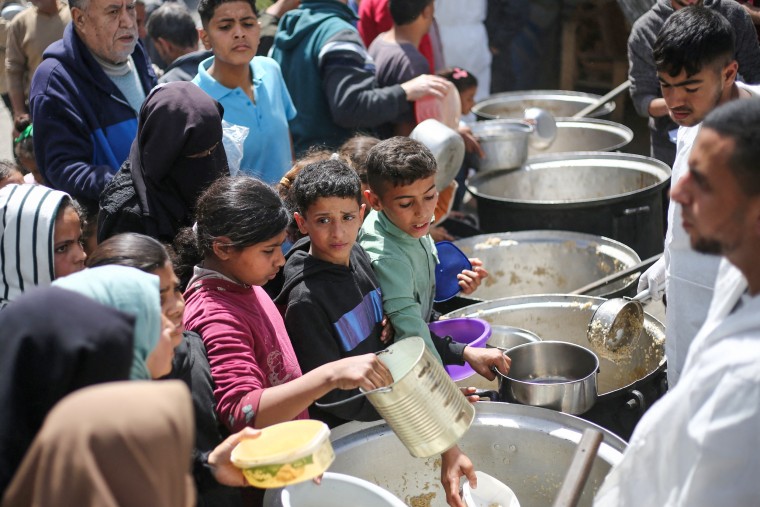
“We’re really scraping the barrel in terms of being able to provide anything of substance,” Allcock, said, speaking from Gaza.
Abeer Etefa, a spokesperson for the World Food Programme, described the situation in Gaza as “dire and worsening,” with all WFP-supported bakeries across the territory closing after wheat flour ran out March 31. By early April, she said, the WFP had also exhausted its stocks of food parcels for distribution.
“Remaining stocks of hot meals commodities are being dispatched to the kitchens of partners providing hot meals,” she said, adding: “We have around 1,000 tons or less left for these hot meals kitchens.”
The WFP and its partners have 85,000 tons of food waiting to enter the enclave, she said.
The Global Nutrition Cluster, a coalition of humanitarian groups, has warned that in March alone, 3,696 children were newly admitted for care for acute malnutrition alone, out of 91,769 children screened — a marked increase from February, when 2,027 children were admitted from a total of 83,823 screened, OCHA said in a report Tuesday.
Meanwhile, the United Nations has sounded the alarm that medical supplies in the enclave are running low, while casualties continue to fill hospitals.
Etefa added that Israeli military activity across the enclave was affecting humanitarian groups’ ability to deliver aid, with the decision to block the flow of aid coming just more than two weeks before Israel shattered its ceasefire with Hamas last month, bringing two months of relative calm in the Gaza Strip to an end.
Israeli policy on aid
In a statement Wednesday, Israeli Defense Minister Israel Katz said his country’s policy in Gaza was “clear and unequivocal,” including the policy to stop humanitarian aid, a move he said “undermines Hamas’ control over the population, and creating an infrastructure for distribution through civilian companies later.”
Meanwhile, the Israeli Foreign Ministry has maintained that there is “no shortage of aid,” pointing to the fact that more than 25,000 aid trucks entered the territory during Israel’s ceasefire with Hamas.
Hamas was withholding supplies from civilians “in order to create an image of shortage,” Foreign Ministry spokesman Oren Marmorstein told NBC News on Wednesday without providing evidence.
OCHA spokesman Jens Laerke said the U.N. body’s team on the ground described “no evidence of diversion of aid.” Etefa said the WFP also had not seen any evidence, adding that the organization did not experience any looting during the ceasefire.
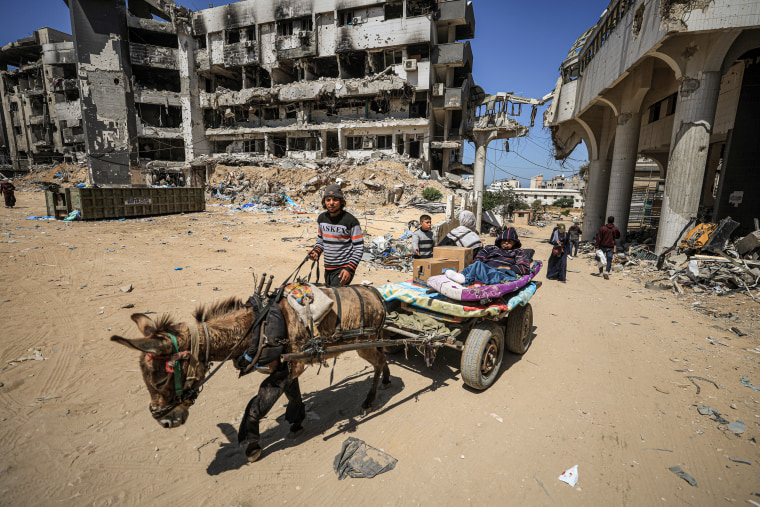
Hamas did not immediately respond to a request for comment on the accusation. But Thursday, the militant group, which has faced protests calling for its ouster and an end to the war, accused Israel of committing a war crime by “declaring the use of starvation as a weapon.”
Under international humanitarian law, parties of a conflict cannot use starvation of a civilian population as a method of warfare or deprive civilians of essential supplies as a legitimate means to subdue an enemy.
Marmorstein previously denied that Israel is violating international humanitarian law with its blockade in a post on X, saying war parties are not obliged to allow aid in if it is “likely to assist the military or economic efforts of the enemy.”
The war in Gaza began after Hamas’ Oct. 7, 2023, terrorist attack, which killed 1,200 and saw around 250 kidnapped, according to Israeli counts. Israel’s military offensive in the enclave since then has killed more than 51,000 people, including thousands of children, according to the Palestinian Health Ministry in Gaza, which has been run by Hamas since 2007.
By the numbers
Data published by COGAT, the Israeli military’s liaison with the Palestinians, shows that 25,200 aid trucks entered Gaza during the ceasefire, carrying more than 447,500 tons of aid into the enclave.
Before the war began, around 500 trucks carrying food and other supplies were entering Gaza each day, according to the British Red Cross. This suggests that by prewar standards, the 25,200 trucks that entered during the ceasefire, according to COGAT’s data, would likely be sufficient for around 1½ months, a point reached this week.
COGAT‘s database shows “no data” for aid entering the enclave between March 2 and April 16.
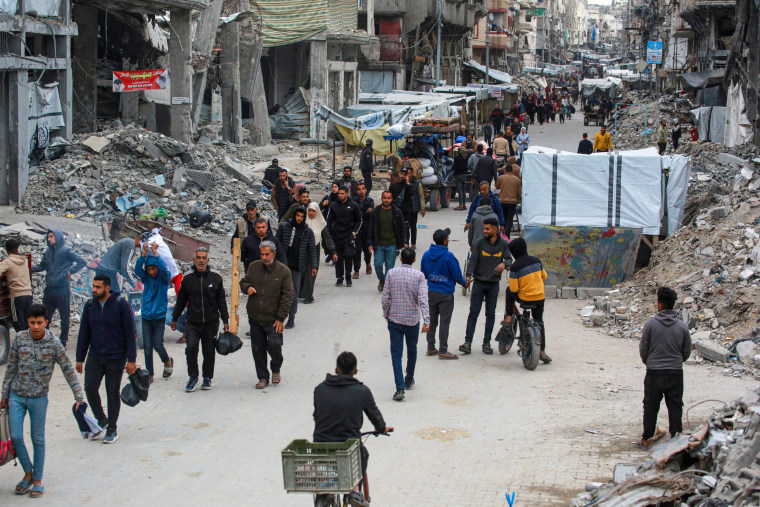
Presented with the above data and asked to comment on the current aid situation on the ground, a spokesperson for COGAT told NBC News they could only confirm that more than 25,000 aid trucks had entered Gaza during the ceasefire. The spokesperson referred other questions related to the flow of aid to Israel’s political leadership.
In a report released this month, the WFP warned that humanitarian aid is the “primary food source” for 80% of households across Gaza.
Meanwhile, it said Israel’s closure of crossings into the territory had “exacerbated the fragility of the Gaza market,” leading prices to soar between 150% and 700% compared with prewar levels, and by 29% to as much as 1,400% above prices during the ceasefire.
As officials debate the reality of the situation on the ground, families across the enclave tell NBC News that they are struggling to survive.
“We’ve been deprived of everything — food, water, school — even clothes,” 12-year-old Hasan Abu Jazar told NBC News’ crew on Monday after waiting in line in Al-Mawasi to gather water at an increasingly rare distribution point. “I’m tired.”



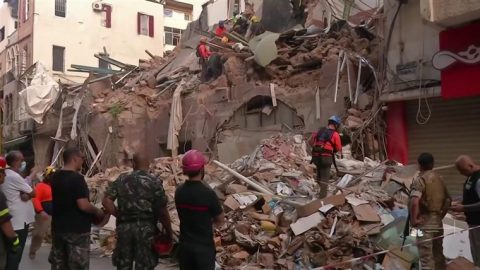




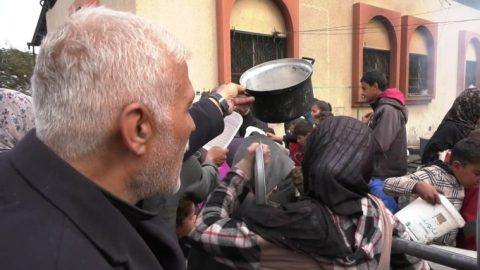
Recent Comments